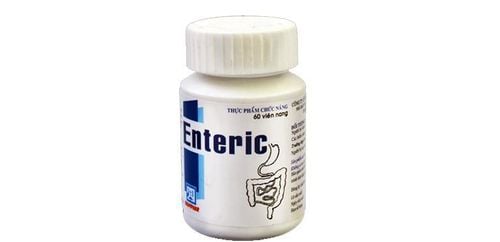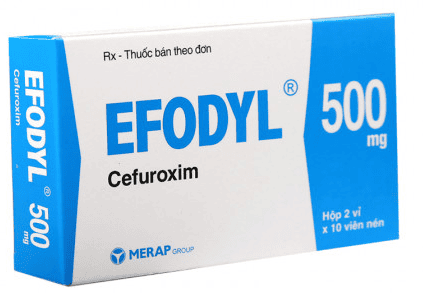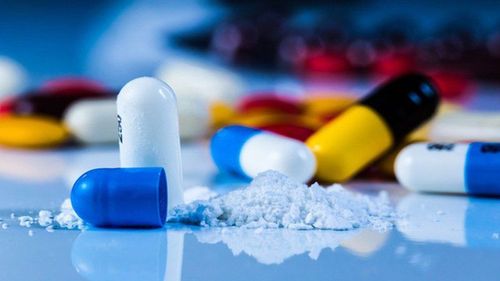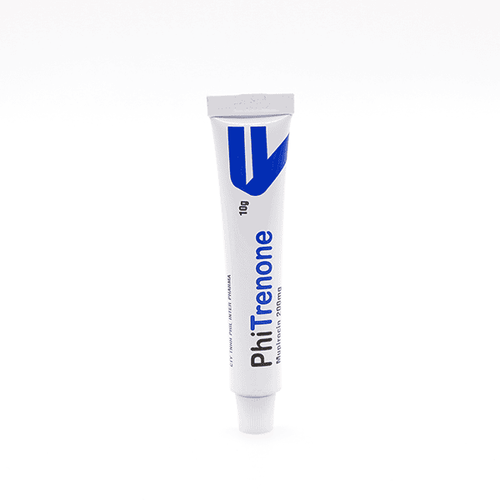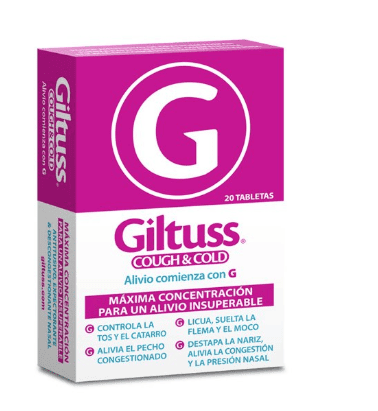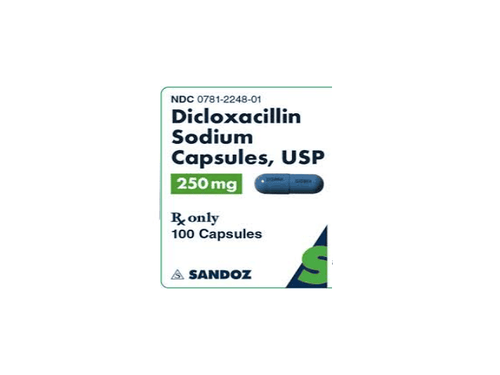This is an automatically translated article.
The drug Greaxim has the main ingredient is Cefotaxime, often used in the treatment of bacterial infections. Patients using Greaxim often experience some unwanted effects such as fever, nausea and vomiting...
1. What is Greaxim?
Greaxim is manufactured and registered by Am Vi Pharmaceutical Joint Stock Company, Vietnam. Grexim is classified as an antiparasitic, anti-infective, anti-viral and anti-fungal drug. The main active ingredient of Greaxim is Cefotaxime.
Dosage form: Powder for injection, each vial contains 1g Cefotaxime in the form of Cefotaxime Sodium.
Packing form: Box of 1 vial, 10 vials, 20 vials, 50 vials, 100 vials.
2. Effects of the drug Greaxim
Cefotaxime belongs to the group of 3rd generation cephalosporin antibiotics, has a broad antibacterial spectrum. Cefotaxime is more active against Gram-negative bacteria, more stable with beta-lactamase than the 1st and 2nd generation. However, the effect of Cefotaxime on Gram-positive bacteria is weaker than that of the 1st generation.
Common bacteria susceptible to Cefotaxime such as: E. Coli, Salmonella, Shigella, Klebsiella pneumonia, Enterobacter, Streptococcus, Staphylococcus, Haemophilus influenzae and Neisseria, ...
3. Indications and contraindications of Greaxim
Indications:
Greaxim is usually indicated in the following cases:
Urinary-genital infections; Impetigo, abscess; Cellulitis; Otitis media, sinusitis ; Pneumonia, bronchitis ; Enteritis, bacillus dysentery ; Gonorrhea ; Meningitis; Sepsis ; Prophylaxis of infection in surgery. Contraindications:
Absolutely do not use Greaxim in cases of hypersensitivity to any ingredient of the drug.
4. Dosage and how to use Greaxim
To use Greaxim safely and effectively, to avoid antibiotic resistance, you need to follow your doctor's instructions on the number of days of treatment, dosage, and route of administration. Do not arbitrarily stop the drug, recalculate the dose or change the route of administration. Also, do not give Greaxim to others to use when they have the same symptoms as you.
Recommended dosage: 2 - 6g / day x 2 - 3 times. For severe infections, it can be increased to 12g/day, by slow intravenous infusion 3-6 times/day.
For adults:
Dose for blue pus bacilli: > 6g/day. Dosage for treatment of gonorrhea: Only 1g. Prophylaxis of postoperative infections: 1g injection 30 to 90 minutes before surgery. For caesarean section: Inject 1g intravenously to the mother as soon as the stalk is clamped and then two more doses after 6 and 12 hours. For children:
Dose of 100 - 150mg/kg body weight x 2 - 4 times/day. The dose may be increased to 200 mg/kg body weight if necessary. Newborns:
Dose of 50mg/kg body weight x 2-4 times/day. The dose may be increased to 100 - 150 mg/kg body weight if necessary.
Patients with renal impairment with creatinine clearance less than 10ml/min need to reduce the dose. The maximum dose is 2g/day.
Route of administration: Greaxim is used by slow intravenous infusion or deep intramuscular injection.
Treatment time: Use the drug for another 3-4 days after the body temperature stabilizes. For group A beta-hemolytic streptococcus, the duration of treatment is at least 10 days. If the infection persists, treatment may be necessary for several weeks.
What to do if you miss a dose of Grexim?
When you miss a dose, you need to inject another dose of Greaxim as soon as you remember, maybe 1-2 hours from the prescribed time. If it is almost time for your next injection/infusion, skip it and use your next dose as scheduled. Do not use a double dose at the next dose to make up for the dose. What to do in case of an overdose of Grexim?
During and after treatment, if the patient has severe and prolonged diarrhea, it may be suspected that pseudomembranous colitis is present. The drug should be discontinued and replaced with another drug effective in the treatment of C. difficile colitis (vancomycin, metronidazol). When there are symptoms of Greaxim poisoning, it is necessary to take the patient to the nearest medical facility for treatment. Peritoneal dialysis or dialysis can help lower blood levels of the drug.
5. Undesirable effects
During the use of Greaxim, patients may experience undesirable effects such as:
Common: Diarrhea, thrombophlebitis at injection site, pain, inflammatory reaction at intramuscular injection site, leukopenia coli, changes in intestinal flora and superinfection,... Rare: Anaphylaxis, hemolytic anemia, thrombocytopenia, granulocytopenia, C.difficile pseudomembranous colitis, enzyme elevation liver and increased bilirubin... Management of side effects:
Need to stop the drug immediately when there are severe manifestations of unwanted effects. Injection or slow intravenous infusion to prevent injection phlebitis. Lidocaine can be mixed with Greaxim before injection to reduce pain caused by intramuscular injection.
6. Drug interactions
When treating two or more drugs, there may be competition or synergism between drugs leading to changes in effects, side effects as well as drug absorption. Therefore, to ensure safety, you need to inform your doctor about the drugs you are taking, including functional foods, herbs, ... Drugs that may interact with Greaxim such as:
Colistin: Use Concomitant use with Greaxim may increase the risk of kidney damage. Penicillin: Can lead to encephalopathy and partial seizures in patients with renal failure when Greaxim is used with penicillin. The ureido-penicillins may decrease the clearance of Greaxim, so the dose of Greaxim should be reduced when co-administered with these agents. Cyclosporin: Increased nephrotoxicity when co-administered with Greaxim.
7. Some notes when using Grexim
Pregnant women: There are not enough data on the safety of taking Greaxim during pregnancy. However, Greaxim crosses the placenta during the second trimester of pregnancy. Therefore, it is necessary to consider carefully before deciding to use it.
Lactation: Grexim is found in breast milk in low concentrations. Three issues need to be concerned in children when the mother takes this drug is to change the intestinal microflora, the effect on the child and the effect on the results of the child's bacterial culture when the child has a fever.
8. Preservation of drugs
Keep Greaxim medicine in a cool, dry place, avoid direct light, temperature below 30 degrees C. Keep Greaxim out of reach of children as well as pets. Above is the entire information about the drug Greaxim, patients need to carefully read the instructions for use, consult a doctor / pharmacist before use. Absolutely do not arbitrarily buy Greaxim treatment at home because there may be unwanted side effects.
Please dial HOTLINE for more information or register for an appointment HERE. Download MyVinmec app to make appointments faster and to manage your bookings easily.




